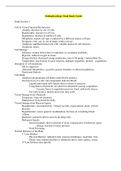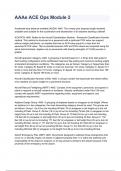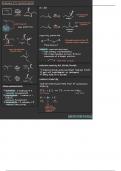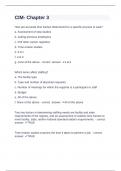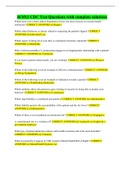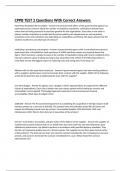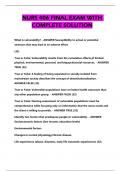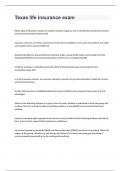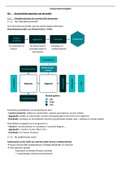Samenvatting
Summary Chapter 1-7 Corporate Communication
- Instelling
- Hogeschool Rotterdam (HR)
Summary from the book of Joep Cornelissen (Corporate Communication, A guide to theory and practice, 4th edition
[Meer zien]Voorbeeld 4 van de 22 pagina's
Voorbeeld 4 van de 22 pagina's
In winkelwagenEnkele voorbeelden uit deze set oefenvragen
1.
What is corporate reputation?
Antwoord: An individuals's collective representation of past images of an organization established over time.
2.
What are the three drivers for intergrated communication?
Antwoord: 1. Market and environmental based drivers 2. Communication based drivers 3. Organizational drivers
3.
How is the stakeholder salience model measured?
Antwoord: By power, legitimacy and urgency
4.
What is the use of the power-interest matrix?
Antwoord: Categorize stakeholders on the basis of their power and interest in the organization
5.
Define stakeholders?
Antwoord: Any group or individual who can affect or is affected by the achievement of the organizations's objectives
6.
What does corporate identity consist of?
Antwoord: Symbolism, communication and behaviour
7.
What are the 3 types of corporate branding?
Antwoord: 1. Monolithic identity 2. Branded identity 3. Endorsed identity
8.
What is an image-culture gap?
Antwoord: Misalignment between organization's image and behaviour
9.
What is the relation between corporate strategy and communication strategy?
Antwoord: The communication programs need to support the corporate objectives
10.
Name the 5 different message styles?
Antwoord: 1. Rational message style 2. Symbolic association style 3. Emotional message style 4. Generic message style 5. Pre-emptive message style

Studenten hebben al meer dan 850.000 samenvattingen beoordeeld. Zo weet jij zeker dat je de beste keuze maakt!

Geen gedoe — betaal gewoon eenmalig met iDeal, creditcard of je Stuvia-tegoed en je bent klaar. Geen abonnement nodig.

Studenten maken samenvattingen voor studenten. Dat betekent: actuele inhoud waar jij écht wat aan hebt. Geen overbodige details!
Je krijgt een PDF, die direct beschikbaar is na je aankoop. Het gekochte document is altijd, overal en oneindig toegankelijk via je profiel.
Onze tevredenheidsgarantie zorgt ervoor dat je altijd een studiedocument vindt dat goed bij je past. Je vult een formulier in en onze klantenservice regelt de rest.
Stuvia is een marktplaats, je koop dit document dus niet van ons, maar van verkoper sybrenvanzeggeren. Stuvia faciliteert de betaling aan de verkoper.
Nee, je koopt alleen deze samenvatting voor €5,49. Je zit daarna nergens aan vast.
4,6 sterren op Google & Trustpilot (+1000 reviews)
Afgelopen 30 dagen zijn er 65040 samenvattingen verkocht
Opgericht in 2010, al 15 jaar dé plek om samenvattingen te kopen
